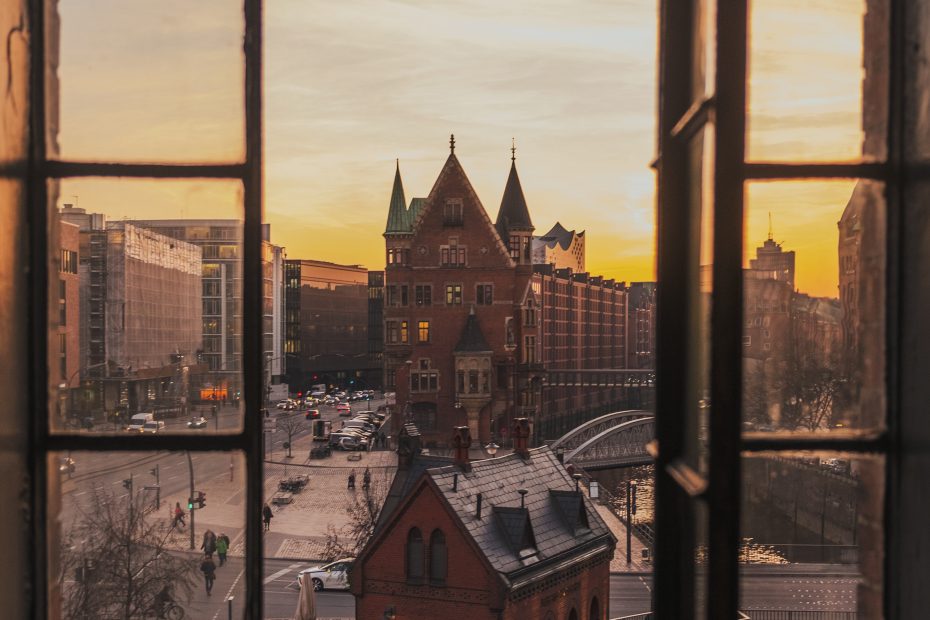Germany is a country with a long and rich history, boasting beautiful historic towns and over 40 UNESCO World Heritage sites that offer glimpses into the past. For history and culture lovers, journeying through these destinations is an unforgettable experience. Come along as we explore some of Germany’s most magnificent historic gems.
Table of Contents
Overview of UNESCO World Heritage Sites in Germany
Germany has the third most UNESCO World Heritage sites in Europe, with expansive forests, grand palaces, medieval towns, ancient monasteries, and more on the prestigious list. These sites represent Germany’s diverse cultural history and natural beauty. Major UNESCO-listed destinations include Cologne Cathedral, the Bauhaus school sites, Aachen Cathedral, and the Wadden Sea. Germany’s historic contributions to art, architecture, technology, and science are recognized through these landmarks.
Famous Historic Towns
Rothenburg ob der Tauber
With its jumble of steep-roofed houses enclosed by sturdy walls, Rothenburg ob der Tauber epitomizes the stereotypical medieval town. Perched high above the Tauber River and dating back over 900 years, Rothenburg was once a powerful seat of government. Today, it enchants visitors with its web of narrow cobblestone lanes and exceptionally preserved Gothic and Renaissance buildings. Must-see sights include the gilded St. Jakob’s Church, Medieval Crime and Justice Museum, and chilling Medieval Torture Chamber.
Bamberg
Situated on the Regnitz River, the pastel-colored town of Bamberg dazzles visitors with its medieval and Baroque architecture. A UNESCO World Heritage site, Bamberg was first mentioned in 902 and remains in an almost pristine state today. The town’s cathedral, old town hall built on an island, and former bishop’s palace are architectural gems. For sweeping views over Bamberg’s sea of red-tiled roofs, head to the former Benedictine monastery Michaelsberg Abbey.
Other Notable Historic Towns
Beyond the most famous sites, Germany hides a wealth of captivating smaller historic towns. These destinations offer visitors a chance to slow down and step back in time.
Quedlinburg
With over 1,300 half-timbered houses, this town in Saxony-Anhalt harkens back to the Middle Ages and Renaissance era. Quedlinburg is renowned for its well-preserved medieval castle district perched on a hill.
Goslar
The medieval flavor of this former free imperial city in Lower Saxony is still palpable today. Highlights include the medieval old town center, the elaborate Town Hall, and the neighboring Rammelsberg mines.
Regensburg
Situated on the Danube River, Regensburg boasts one of Germany’s largest surviving medieval old towns. The Gothic cathedral and 12th century Stone Bridge are must-sees.
UNESCO World Heritage Sites
Beyond its charming towns, Germany contains UNESCO World Heritage sites that encapsulate unique aspects of its history.
Würzburg Residence
This 18th century palace constructed under the patronage of the prince-bishops houses one of Germany’s foremost Baroque interiors with lavish frescoes and stucco work.
Messel Pit Fossil Site
This inactive quarry is a fossil trove containing superbly preserved prehistoric plants and animals that provide insight into evolutionary processes.
Mines of Rammelsberg
Located near Goslar, these historic mines bear testimony to medieval mining technology with a complex water management system for powering machinery.
Town Hall and Roland Statue in Bremen
The ornate Town Hall and medieval statue of Roland in the market square exemplify civic independence and autonomy in the Holy Roman Empire.
Old Town of Regensburg
This medieval town represents an intact urban ensemble showcasing influential town planning, architecture, and culture from the Holy Roman Empire period.
Tips for Visiting Historic Sites in Germany
To make the most of your journey back in time, keep these tips in mind:
- Hire local guides to provide context and share local secrets that you would otherwise miss.
- Venture off the tourist track to find lesser-known historic gems like Michelstadt or Meissen.
- Reserve tickets for tours and attractions in advance to skip long queues.
Importance of Preserving Historic Sites
Germany’s plethora of heritage sites provide fascinating glimpses into the past and must be responsibly maintained for future generations. Preserving these monuments honors the nation’s history and culture. Beyond their educational value, historic sites also boost local economies through tourism. Despite preservation efforts, constant environmental stresses mean vigilant conservation is required. By supporting responsible tourism, visitors can play a role in protecting Germany’s irreplaceable heritage.
Conclusion
Germany’s winding cobblestone streets, towering castles, and grand cathedrals transport you centuries back in time. Wandering through these well-preserved historic towns and UNESCO sites reveals the rich culture and heritage that shaped Germany. As the past comes to life around you, appreciate the efforts that went into caring for these monuments over hundreds of years. The next time you crave an escape from the present, let Germany’s famous historic destinations revive the sense of wonder that comes with learning from our collective history.
FAQs
Q: What is the oldest town in Germany?
A: Trier is often cited as Germany’s oldest town, with evidence of settlement dating back over 2,000 years to the Roman Empire era. Other very old German towns include Worms, founded around 800 BC, and Augsburg, founded by the Romans in 15 BC.
Q: Does Germany have medieval castles?
A: Yes, Germany is home to many medieval castles dating from the 10th to 16th centuries. Famous examples include Burg Eltz on the Moselle River and the Bavarian castles of Neuschwanstein and Hohenschwangau.
Q: What is the most visited UNESCO site in Germany?
A: The Cologne Cathedral, a magnificent Gothic cathedral along the Rhine River, is the most visited UNESCO World Heritage site in Germany, attracting around 6 million visitors per year.
Q: How do I get to Rothenburg ob der Tauber?
A: Rothenburg is located in the German state of Bavaria. The nearest major city is Würzburg, which has train connections to Rothenburg. The town can also be reached by bus from Munich or Nuremberg.
Q: What are the must-see sights in Bamberg?
A: Top sights in Bamberg include the Old Town Hall, the Cathedral, Little Venice waterfront, Altenburg Castle, and the Bamberg Horseman statue. Don’t miss trying the town’s famous smoky Rauchbier beer.
